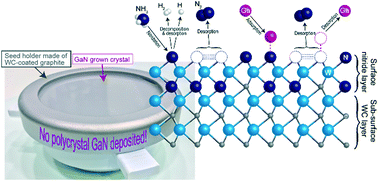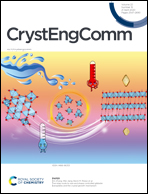Tungsten carbide layers deposited on graphite substrates via a wet powder process as anti-parasitic-reaction coatings for reactor components in GaN growth†
Abstract
To prevent or suppress parasitic reactions (polycrystalline GaN deposition on the surface of susceptors) in the bulk GaN growth process, catalytic tungsten carbide (WC) layers are proposed as anti-parasitic-reaction (APR) coatings. An industrially feasible technique for producing APR coatings on a graphite substrate via a wet powder process is developed and the WC layers are confirmed to effectively prevent or suppress polycrystalline GaN deposition on APR-coated practical reactor components during the bulk growth processes of hydride vapor-phase epitaxy and halogen-free vapor-phase epitaxy. The mechanism of the APR function is investigated using X-ray photoelectron spectroscopy. It is found that a surface nitride layer forms on the topmost surface of the WC catalytic layer after annealing in an NH3 atmosphere. It is supposed that this nitride layer inhibits the adsorption of active nitrogen adsorbates and Ga species on the catalytic WC layers. The deposition of APR coatings on graphite substrates allows the growth of large bulk GaN crystals, which is necessary for low-cost GaN wafers for vertical GaN power devices.



 Please wait while we load your content...
Please wait while we load your content...